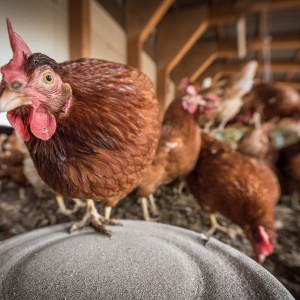
This paper assesses how nationally recommended diets across the world compare to average diets in the categories of human nutrition, environmental impacts and animal welfare. It finds that, in most countries, the recommended diets largely out-perform current diets in all three categories because of lower animal product consumption.
The study uses the following indicator categories:
- Human nutrition
- A modified nutrient-rich foods index, which accounts for the amounts of 18 beneficial nutrients (e.g. protein and vitamin A) and two nutrients to limit (saturated fatty acids and cholesterol)
- Environmental impacts
- Greenhouse gas emissions
- Land use
- Water use
- Animal welfare
- Animal life years suffered (ALYS): multiplication of number of animals, their lifespan and the intensity of their suffering (for details on how intensity of suffering is estimated, see Section 2.2 of Framework for integrating animal welfare into life cycle sustainability assessment)
- Loss of animal lives (AL): as for the previous indicator but additionally accounting for premature deaths (depending on the age at which each type of animal tends to be killed, and their natural lifespan)
- Loss of morally adjusted animal lives (MAL): premature loss of animal life is weighted according to each animal’s “degree of self-awareness and their sense of time”, approximated by number of neurons in the brain. The authors point out that the method morally equates “a few dozen humans” to the tens of thousands of animals killed to support one human life (on a Western-style diet).
In 27 out of 37 countries considered, switching from the current average diet to the nationally recommended diet would reduce the amount of animal products consumed. Exceptions include Indonesia and India, where animal product consumption is currently particularly low and would increase if everyone consumed the nationally recommended diets.
As shown in the figure below, in six countries (Australia, Brazil, Ireland, Japan, Portugal, and Slovenia), switching to recommended diets improves all indicators - a win-win-win. In South Korea, all indicators become worse when switching to recommended diets. In the remaining countries, there are tradeoffs as some indicators get worse and others improve.
 Image: Figure 4, Scherer et al. Relative changes in nutrient deficiency, environmental impacts, and animal welfare loss when moving from average current diets in each country to the nationally recommended diet.
Image: Figure 4, Scherer et al. Relative changes in nutrient deficiency, environmental impacts, and animal welfare loss when moving from average current diets in each country to the nationally recommended diet.
For example, in Sweden, moving to the recommended diet would mean better animal welfare as measured by animal lives lost prematurely (AL), but worse animal welfare as measured by animal life years suffered (ALYS) and loss of morally adjusted animal lives (MAL). This is partly because the recommended Swedish diet contains less seafood and more eggs and poultry than the current Swedish diet. Seafood generally involves the loss of a larger number of smaller and less sentient individuals relative to other animal products, with minimal suffering during their lifetime if they are wild-caught. Egg and poultry production causes the prolonged suffering of a large number of animals compared to meat or milk.
Abstract
Sustainable food systems are essential for meeting nutritional requirements, limiting environmental impacts, and reducing animal welfare loss. Although current dietary trends in many regions rather go in the opposite direction, the adequacy of dietary guidelines is unknown, and the three sustainability dimensions are generally not assessed simultaneously. Here, we assessed nation-specific recommended diets for these impacts compared with the average diet. We assessed the trade-offs between nutritional quality, environmental sustainability (carbon, land, and water footprints), and animal welfare. Most countries reduce their animal product consumption in terms of food calories when switching to the nationally recommended diet. Recommended diets have the potential for “win-win-wins” in all three categories when compared with the current average diet, such as that shown in Brazil. However, South Korea loses in all three regards, and many other countries face trade-offs. This highlights the scope for the optimisation of dietary guidelines to minimise such trade-offs.
Reference
Scherer, L., Behrens, P. and Tukker, A., 2019. Opportunity for a Dietary Win-Win-Win in Nutrition, Environment, and Animal Welfare. One Earth, 1(3), pp.349-360.
Read the full paper here. See also the Foodsource building block What is animal welfare?







Post a new comment »